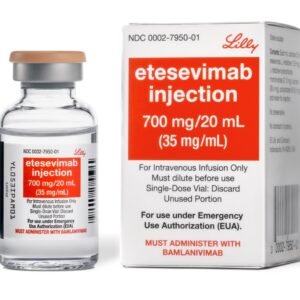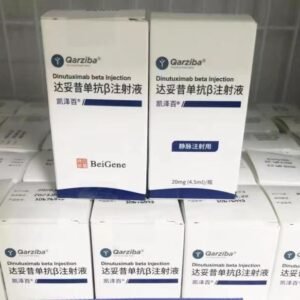Rosuvastatin Calcium and Ezetimibe Tablets
Functions and indications:
1. Primary hypercholesterolemia: This product can be used alone or in combination with HMG-CoA reductase inhibitors (statins) to treat primary (heterozygous familial or non-familial) hypercholesterolemia as an adjuvant therapy in addition to dietary control, and can reduce total cholesterol (TC), low-density lipoprotein cholesterol (LDL-C), and apolipoprotein B (ApoB). 2. Homozygous familial hypercholesterolemia (HoFH): This product can be used in combination with statins as an adjuvant therapy for other lipid-lowering therapies (such as LDL-C plasmapheresis), or to reduce TC and LDL-C levels in HoFH patients when other lipid-lowering therapies are ineffective. 3. Homozygous sitosterolemia (or phytosterolemia): This product is used as an adjuvant therapy in addition to dietary control to reduce the levels of sitosterol and phytosterols in patients with homozygous familial sitosterolemia.
Usage and Dosage:
The dosage and usage of this product may vary in different dosage forms and specifications. Please read the specific drug instructions for use, or follow the doctor’s advice. Ezetimibe tablets: 1. Patients should adhere to a proper low-fat diet during treatment with this product. 2. The recommended dose of this product is 10 mg once a day. It can be taken alone, in combination with statins, or in combination with fenofibrate. This product can be taken at any time of the day, on an empty stomach or with food. 3. Use of the drug in elderly patients: Elderly patients do not need to adjust the dose. 4. Use of the drug in pediatric patients: (1) Children and adolescents aged 10 years and above: No dose adjustment is required. (2) Children under 10 years old: This product is not recommended. 5. Use of the drug in patients with impaired liver function: Patients with mild impaired liver function do not need to adjust the dose (Child-Pugh score of 5 or 6) (see [Precautions] and [Pharmacokinetics]). 6. Use of the drug in patients with impaired renal function: Patients with impaired renal function do not need to adjust the dose. 7. Used in combination with bile acid chelators: This product should be taken more than 2 hours before or more than 4 hours after taking bile acid chelators.
Adverse reactions:
1. In a 112-week clinical study, patients took 10 mg of this product daily alone (n=2396) or in combination with statins (n=11,308) or fenofibrate (n=185). The results showed that patients generally tolerated this product well, adverse reactions were mild and transient, the overall incidence of side effects was similar to that of placebo, and the trial termination rate due to adverse reactions in the trial group was comparable to that in the placebo group. 2. The incidence (95% confidence interval) of common (≥1/100, 3 times the upper limit of normal value) in patients who took this product alone (n=2396) was 4.5% (1.9, 8.8) and 2.7% (1.2, 5.4) (adjusted according to treatment). The corresponding incidence of cholecystectomy was 0.6% (0.0, 3.1) and 1.7% (0.6, 4.0) (see [Precautions]). The number of patients treated with ezetimibe or fenofibrate alone or in combination with ezetimibe was insufficient to assess the risk of gallbladder disease. In this study, no CPK elevation >10 times the upper limit of normal values was observed in any treatment group. 6. Laboratory indicators: In controlled clinical studies of ezetimibe alone, the incidence of transaminase elevation (ALT and/or AST >3 times the upper limit of normal values) caused by ezetimibe (0.5%) and placebo (0.3%) was similar. In studies of ezetimibe combined with statins, the incidence of transaminase elevation was 1.3% in patients taking ezetimibe and statins, and 0.4% in patients taking statins alone. However, this transaminase elevation had no clinical manifestations and was not associated with cholestasis, and returned to normal values after discontinuation or continuation of treatment. The CPK elevation (>10 times the upper limit of normal values) caused by ezetimibe alone or in combination with statins was similar to that of taking placebo or statins alone, respectively. Adverse reactions reported after the product was marketed (ignoring the causal relationship evaluation): (1) Abnormalities of the blood and lymphatic systems: thrombocytopenia. (2) Abnormalities of the nervous system: dizziness; paresthesia. (3) Abnormalities of the digestive system: pancreatitis; constipation. (4) Abnormalities of the skin and subcutaneous system: erythema multiforme. (5) Abnormalities of the musculoskeletal and connective tissue: myalgia; myopathy/rhabdomyolysis (see [Precautions]). (6) Systemic abnormalities and medication site abnormalities: weakness. (7) Immune system abnormalities: hypersensitivity reactions, including allergic reactions, angioedema, rash and urticaria. (8) Abnormalities of the liver system: hepatitis; gallstones; cholecystitis. (9) Mental abnormalities: depression.
Contraindications:
1. Patients who are allergic to any component of this product. 2. Patients with active liver disease or unexplained persistent elevation of serum aminotransferase. 3. All HMG-CoA reductase inhibitors are restricted for use in pregnant and lactating women. When this product is used with such
Share:
Products
Our offers
Health Classification
Let us work together to protect precious health



























